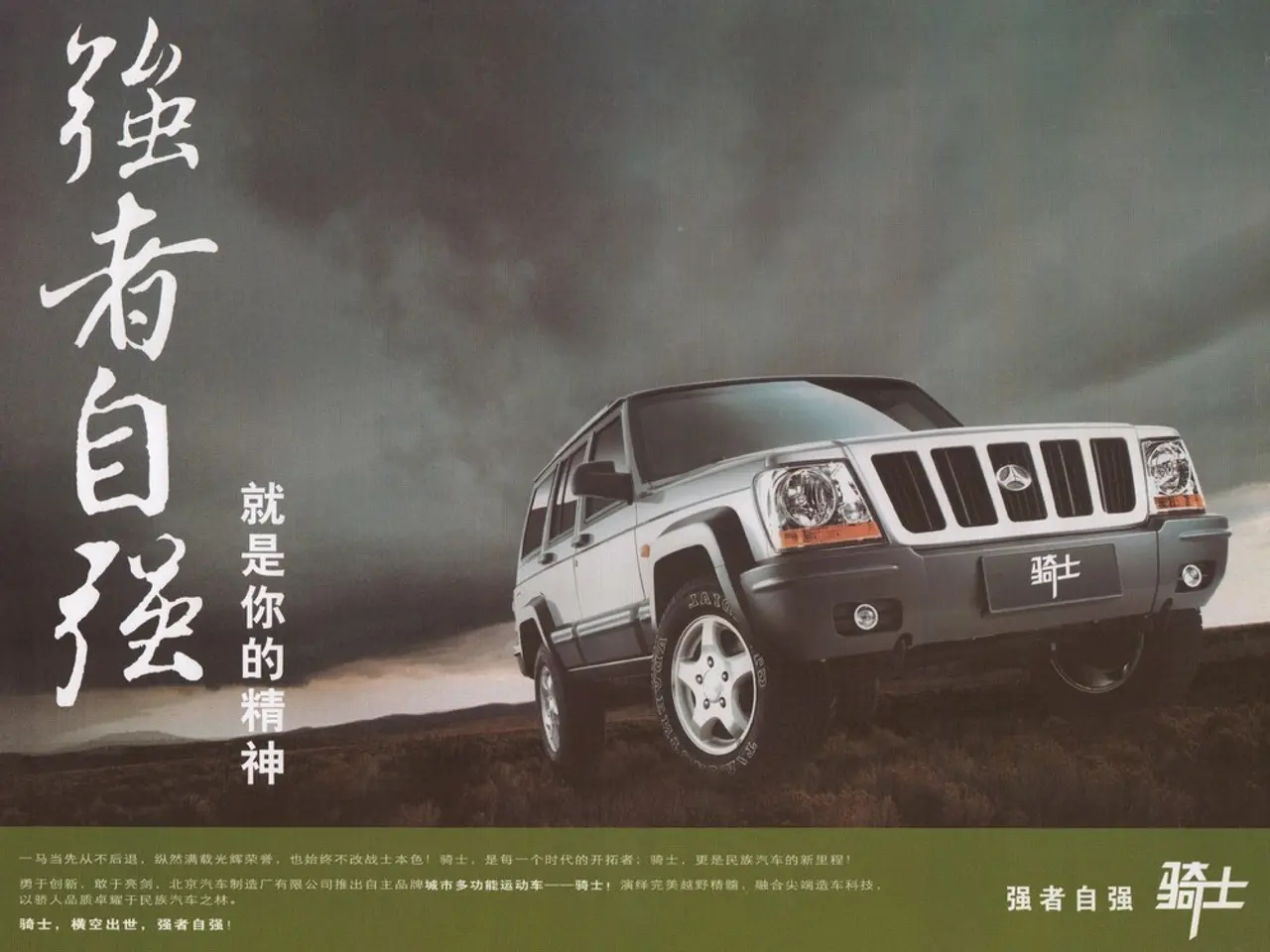In June, BYD dominates the Chinese new energy vehicle (NEV) market with a market share of 31.7%, while Tesla trails in fourth place with a 5.5% share.
In the bustling world of China's automotive industry, BYD Auto has taken the lead in both the overall passenger vehicle market and the new energy vehicle (NEV) segment. Geely Automobile ranks a close second in the overall market, while Tesla is steadily gaining ground in the NEV sector.
In March 2025, BYD led the overall passenger vehicle market with retail sales of approximately 290,000 units, marking a year-over-year growth of 11.5%. In the NEV segment, BYD's dominance is even more pronounced, with a 31.7% market share in June and retail sales of 352,081 NEVs, reflecting a strong year-on-year increase of 25.7%.
Geely Automobile ranks second overall in passenger vehicle retail sales, with about 195,000 units sold in March 2025, representing an impressive 70.5% year-over-year growth. In the NEV segment, Geely sold 114,798 units in June 2025, a 80.7% year-on-year increase.
Tesla, while holding the 8th position overall in passenger vehicle retail sales in March 2025 with 74,000 units sold and a 18.8% year-on-year growth, has seen significant improvement in the NEV market. In June 2025, Tesla ranked 4th in the NEV market with retail sales of 61,484 units and a 5.5% market share, showing a substantial monthly growth of 59.3% and some year-on-year improvement.
Changan Automobile, while unspecified in the overall market in June, ranked third in China's NEV market in the first half of the year with 367,521 NEV sales and a 6.7 percent market share.
It's worth noting that while BYD and Geely produce both BEVs and PHEVs, Tesla currently only produces BEVs. In China, NEVs include plug-in hybrid electric vehicles (PHEVs), battery electric vehicles (BEVs), and fuel cell vehicles.
As we move forward, the competitive landscape in China's automotive market continues to evolve, with BYD, Geely, and Tesla leading the charge. BYD's dominance in both the overall and NEV markets, Geely's strong performance, and Tesla's growing presence in the NEV sector all point to an exciting future for the electric vehicle market in China.
- Despite Tesla's steady growth in the new energy vehicle (NEV) sector, BYD Auto remains the frontrunner, leading both the overall passenger vehicle market and the NEV segment.
- In March 2025, Geely Automobile claimed the second spot in the overall passenger vehicle market, showing a significant year-over-year growth of 70.5%.
- By June 2025, Tesla had climbed to the 4th position in the NEV market, seeing a substantial monthly growth of 59.3% and a year-on-year improvement.
- Changan Automobile, producing both BEVs and PHEVs, ranked third in China's NEV market in the first half of the year, with 6.7 percent market share.
- The automotive industry in China is witnessing a shift towards electric vehicles (EVs), with BEVs and PHEVs making up a significant part of the NEV market.
- BYD and Geely, similar to Tesla, are active players in the automotive industry, producing not only EVs but also traditional passenger vehicles.
- The finance sector plays a crucial role in the growth and development of the electric vehicle (EV) market, as investment in technology and transportation infrastructure is vital.
- The growing presence of electric vehicles (EVs) in China's lifestyle, driven by advancements in technology and the urgent need for sustainable transportation, encouraged the growth of the industry.




